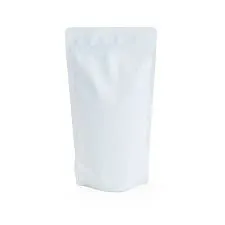- Afrikaans
- Albanian
- Amharic
- Arabic
- Armenian
- Azerbaijani
- Basque
- Belarusian
- Bengali
- Bosnian
- Bulgarian
- Catalan
- Cebuano
- chinese_simplified
- chinese_traditional
- Corsican
- Croatian
- Czech
- Danish
- Dutch
- English
- Esperanto
- Estonian
- Finnish
- French
- Frisian
- Galician
- Georgian
- German
- Greek
- Gujarati
- haitian_creole
- hausa
- hawaiian
- Hebrew
- Hindi
- Miao
- Hungarian
- Icelandic
- igbo
- Indonesian
- irish
- Italian
- Japanese
- Javanese
- Kannada
- kazakh
- Khmer
- Rwandese
- Korean
- Kurdish
- Kyrgyz
- Lao
- Latin
- Latvian
- Lithuanian
- Luxembourgish
- Macedonian
- Malgashi
- Malay
- Malayalam
- Maltese
- Maori
- Marathi
- Mongolian
- Myanmar
- Nepali
- Norwegian
- Norwegian
- Occitan
- Pashto
- Persian
- Polish
- Portuguese
- Punjabi
- Romanian
- Russian
- Samoan
- scottish-gaelic
- Serbian
- Sesotho
- Shona
- Sindhi
- Sinhala
- Slovak
- Slovenian
- Somali
- Spanish
- Sundanese
- Swahili
- Swedish
- Tagalog
- Tajik
- Tamil
- Tatar
- Telugu
- Thai
- Turkish
- Turkmen
- Ukrainian
- Urdu
- Uighur
- Uzbek
- Vietnamese
- Welsh
- Bantu
- Yiddish
- Yoruba
- Zulu
Creating Custom Boxes Based on Length Width and Height Specifications
Understanding the Importance of Length, Width, Height, and Box in Packaging
When it comes to packaging, the dimensions of an object—length, width, and height—play a crucial role in determining how products are stored, shipped, and displayed. The concept of a box, often assumed to be simple, embodies complexity when it comes to efficient transportation, storage, and marketing of items. In this article, we'll explore how these dimensions influence packaging decisions and their broader implications in various industries.
The Significance of Dimensions
Length, width, and height are fundamental measurements used to define the size of a box. These dimensions impact not only the physical space that a box occupies but also how well it can protect its contents. The ideal dimensions ensure that there’s minimal movement of the products inside, reducing the likelihood of damage during transportation. For instance, a box that's too large for its contents may allow items to shift, potentially leading to breakage or deformation. Conversely, a box that's too small could lead to crushing or damage to the items, particularly fragile products.
Packaging Design and Material Considerations
Designing a packaging box involves careful consideration of the length, width, and height, along with the materials used. Cardboard is a common choice due to its lightweight, durability, and cost-effectiveness. However, the thickness of the cardboard, which can affect the box's overall size and strength, must also be taken into account.
When creating a box, one must also consider the shape. Although a rectangular box is the most common, special shapes may be required to fit particular products. For example, a cylindrical box may be better suited for a roll of paper or a bottle. Therefore, the length, width, and height of the box must correspond with the product's dimensions to ensure an effective fit.
Efficiency in Transportation
length width height box

In logistics, the dimensions of packaging boxes can make a significant difference in costs and efficiency. Shipping companies often charge based on the cubic volume of the package, so optimizing dimensions can result in substantial savings. When boxes are designed to fit snugly on pallets or within shipping containers, more products can be transported at once, reducing overall shipping costs and environmental impact.
Moreover, extended transportation networks require that boxes are stackable and organized in a way that maximizes space. This is particularly essential in warehouses where inventory management plays a crucial role in operational efficiency. Incorrect dimensions can lead to wasted space and increased costs, ultimately affecting a company's bottom line.
Marketing and Presentation
The dimensions of a box also influence its marketing potential. Packaging is often the first interaction a consumer has with a product, and the design can significantly shape perceptions. A well-designed box that utilizes length, width, and height effectively can entice customers and provide functionality, such as easy opening or resealing.
Furthermore, innovative packaging can differentiate a product in a crowded market. For example, unique and aesthetically pleasing box shapes can create a memorable brand experience, encouraging repeat purchases. On the other hand, environmentally-friendly packaging that maintains efficiency in size can appeal to modern consumers who are increasingly conscious of sustainability.
Conclusion
In conclusion, length, width, height, and box design are far more than mere technical specifications; they are fundamental aspects of successful packaging that impact functionality, cost, and marketing. As industries evolve and consumer expectations change, the role of packaging becomes even more critical. By optimizing dimensions and design, companies can enhance their operational efficiency, protect their products, and ultimately create a better experience for customers. Understanding these basic principles ensures that everyone involved in packaging—from manufacturers to consumers—can appreciate the art and science behind effective box design. As the market continues to innovate, the balance of these dimensions will remain a key focus for successful packaging solutions.













